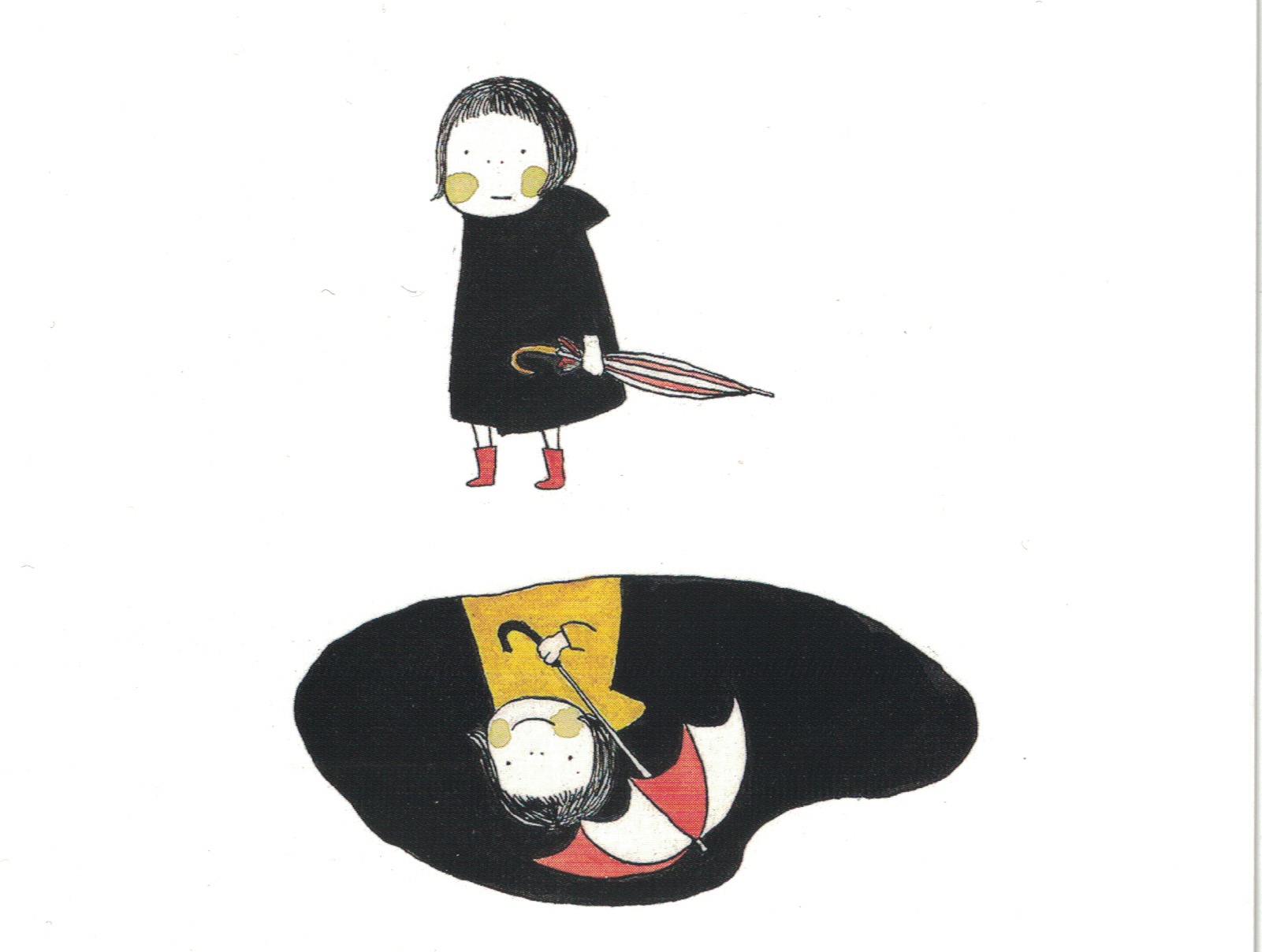There is no Japanese translation for this post. 2021/10/19. / 現在この投稿に和訳はありません。2021年10月19日
THE TWO USAGES OF ADJECTIVES
CONTENTS
1. A diagnostic test
2. Answer key
3. The two usages of adjectives
4. The Predicative Adjective
★ What is the predicate and Predicative Adjective?
(1) Case A When I-Adjective is the Predicative Adjective
(2) Case B When Na-Adjective is the Predicative Adjective
5. The Pre-Noun Modifier
★ What is the Pre-Noun Modifier?
(1) Case C. I-Adjective as the Pre-Noun Modifier
(2) Case D. Na-Adjective as the Pre-noun Modifier1. A diagnostic test

In using adjectives, when do you use “na” and when don’t you? To answer this question, you need to know the two usages of adjectives.
If you would like a quick review or preview, just scroll to the five tables with blue titles!
But if you would like to stay with us for a while and think about it, here is a mini diagnostic test:
Translate the following English sentences into Japanese:
#1. This bookmark (shiori) is convenient (benri).
#2. I made a convenient bookmark.
#3. The water (mizu) of the river (kawa) was cold (tsumetai).
#4. I want to drink some cold water.
For answers, go to the next section.
2. Answer key
#1. Kono shiori wa benri desu.
#2. Watashi wa benri na shiori o tsukurimashita.
#3. Kawa no mizu wa tsumetakatta desu.
#4. Tsumetai mizu ga nomitai desu.
Were all your translations correct? Then, this post will be a relaxing reading for you.
If you did them correctly but didn’t know why, this post will be a good review for you.
If you missed one or more, this post is written for you!
3. The two usages of adjectives
First, we will organize the two usages of an adjective in a sentence.
In other words, we use adjectives as:
(1) “Predicative Adjective” or
(2) “Pre-Noun Modifier”.
You call an adjective Predicative Adjective when you find it at or near the end of a sentence. It is not followed by a noun. For examples, see #1 and #3 sentences in the test.
On the other hand, when you see an adjective followed by a noun, like #2 and #4 in the test, you call it a Pre-Noun Modifier. In this case, its position is not limited to the end of a sentence.
You use either I-Adjective or Na-Adjective as Predicative Adjective or Pre-Noun Modifier. Therefore, there are four cases in total. We will explain each case in the following sections in the alphabetical order in this table:
| (1) Predicative Adjective | (2) Pre-Noun Modifier | |
|---|---|---|
| I-Adjective | Case A | Case C |
| Na-Adjective | Case B | Case D |
Note: In this post, we only focus on how to use adjectives in these four cases. If you need to learn or review what I-Adjective and Na-Adjective are, and how to tell one from the other, please refer to: How to Tell I-Adjective and Na-Adjective.
4. The Predicative Adjective
★What is the Predicate and Predicative Adjective?
One of the two usages of adjectives is “Predicative Adjective”. It means an adjective used in the predicate of a sentence.
By the way, what was a predicate?
A predicate is one of the two indispensable parts of a sentence along with the subject. Generally speaking, a predicate is the part speaking about the subject.
Below are some examples; we underlined the predicates.
Example 1. Watashi wa amerika-jin desu. (I am an American.) [In this sentence, the predicate is a noun and “desu”.]
Ex. 2. Watashi wa hon o kaimashita. (I bought a book.) [the predicate can be a verb like this.]
Ex. 3. Kyoo wa atsuku-nai desu. (It is not hot today.) [the predicate can also be an adjective and “desu”.]
Ex. 4. Kono apuri wa benri desu. (This app is convenient.) [the predicate can be an adjective and “desu”.]
In Ex 3 and Ex. 4, you see adjectives in the predicate, so we call them Predicative Adjective. And the Predicative Adjective is basically at the end of the sentence like this.
In the next sections, Case A and Case B, we will show you how we use adjectives as Predicative Adjective.
Case A. When I-Adjective is Predicative Adjective
The following table shows all four forms of “aoi (green or unripe)”, an I-Adjective, in the predicate.
I-Adjective in the Predicate (Polite Speech Style)
| Affirmative form | Negative form | |
|---|---|---|
| Non-Past (Present or Future) | Kono tomato wa aoi desu. (This tomato is green.) | Kono tomato wa aoku-nai desu. (This tomato is not green.) |
| Past | Kono tomato wa aokatta desu. (This tomato was green.) | Kono tomato wa aoku-nakatta desu. (This tomato was not green.) |
Attention! The “desu” after I-Adjective never inflects or changes its form. It is because this “desu” has only one function: Its presence adds politeness to the speech.
The reason is that an inflected I-Adjective can express its mood (whether it is affirmative or negative, etc.) and tense (past, present or future, etc.), and so “desu” doesn’t have any other meaning to convey.
Because of this, when you speak in Plain Style or the casual speech style, you simply drop “desu” after I-Adjective.
Case B. When Na-Adjective is Predicative Adjective
The following table shows all four forms of “joobu (sturdy)”, a Na-Adjective, in the predicate.
Na-Adjective in the Predicate (Polite Speech Style)
| Affirmative form | Negative form | |
|---|---|---|
| Non-Past | Kono hukuro wa joobu-desu. (This bag is sturdy.) | Kono hukuro wa joobu-ja-arimasen. (This bag isn't sturdy.) |
| Past | Kono hukuro wa joobu-deshita. (This bag was sturdy.) | Kono hukuro wa joobu-ja-arimasendeshita. (This bag wasn't sturdy.) |
Remember that “desu” following a Na-Adjective works like the verb “be” in English. Since a Na-Adjective never changes its form, “desu” inflects to express the mood and tense of the adjective.
Then, how do we turn a sentence with a Na-Adjective into Plain Style or the casual speech style?
Replace “desu” with “da”, its Plain Style equivalent. “Da” inflects as shown below:
Na-Adjective in the Predicate (Plain Style)
| Affirmative form | Negative form | |
|---|---|---|
| Non-Past | Kono hukuro wa joobu-da*. (This bag is sturdy.) | Kono hukuro wa joobu-ja-nai*2. (This bag isn't sturdy.) |
| Past | Kono hukuro wa joobu-datta. (This bag was sturdy.) | Kono hukuro wa joobu-ja-nakatta*2. (This bag wasn't sturdy.) |
*This “da” is often omitted in speech as understood.
*2 “Ja” is the contracted form of “dewa”, which is used more commonly in writing.
5. The Pre-Noun Modifier
★What is the Pre-Noun Modifier?
The second of the two usages of adjectives is Pre-Noun Modifier.
A Pre-Noun Modifier qualifies a noun by directly preceding it. There is an apt example in English: In the sentence”Look at the beautiful moon!”, the word “beautiful” is a Pre-Noun Modifier.
Like in English, the Pre-Noun Modifier and the noun form a block in Japanese. It is a noun block, which means you can use the set like a noun anywhere in a sentence. See examples below:
Ex. 5. Akai torii ga miemasu. (A red shrine gate can be seen.) [Akai torii is the subject of the sentence.]
Ex. 6. Watashitachi wa akai torii o mimashita. (We saw a red shrine gate.) [Akai torii is the object.]
Ex. 7. Akai shatsu o kite, Max wa shashin o torimashita. (In a red shirt, Max had his photo taken.) [Akai shatsu is in the adverbial.]
Ex. 8 Prezento wa akai jitensha deshita. (The present was a red bicycle.) [Akai jitensha is in the predicate. By the way, this “akai” is directly followed by a noun and so is a part of a noun block. Therefore it is not a Predicative Adjective.]
Now we have had a common understanding about the Pre-Noun Modifier, so the next sections, Case C and Case D will show how to use it.
Note: In Japanese, a Pre-Noun Modifier can have a mood and a tense!
Case C. I-Adjective as the Pre-Noun Modifier
I-Adjective as Pre-Noun Modifier
| Affirmative form | Negative form | |
|---|---|---|
| Non-Past | omoi hukuro*3 (a heavy bag) | omoku-nai hukuro (a bag which is not heavy) |
| Past | omokatta hukuro (a bag which was heavy) | omoku-nakatta hukuro (a bag which was not heavy) |
*3 “Omoi hukuro” can have two interpretations. Depending on the context, it means “a heavy bag in general” or “a bag which is heavy at the time of speaking”.
Case D. Na-Adjective as the Pre-noun Modifier
Na-Adjective as Pre-Noun Modifier
| Affirmative form | Negative form | |
|---|---|---|
| Non-Past | kirei-na hukuro *4 *5 (a clean bag) | kirei-ja-nai hukuro (a bag which is not clean) |
| Past | kirei-datta hukuro (a bag which was/used to be clean) | kirei-ja-nakatta hukuro (a bag which was not clean) |
*4 Only in this case, Na-Adjective needs a linking particle “na” before the noun it qualifies.
*5 It means “a clean bag in general” and “a clean bag at the time of speaking” depending on the context.
[End of the English text]




